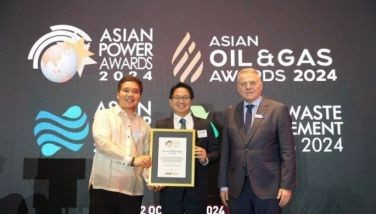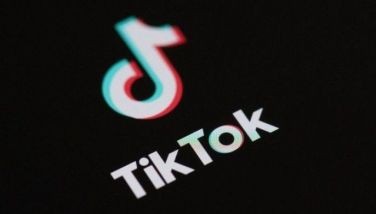The impact of Filipino scientists on world science
As a nation, we are not publishing as many scientific papers as many of our neighbors do. Yet, individual Filipino scientists, here and abroad, are making significant contributions to world science. How much are our scientists contributing? How do their contributions compare with the best of the world? What impact has Filipino scientists made on world science?
There are numerous measures of the impact of the scientific work of a scientist. An analysis of the various metrics used in the evaluation of a researcher and his work is the topic of a recent Nature magazine special (print edition: June 17, 2010; available online at http://www.nature.com/news/specials/metrics/index.html. (With apologies, I’ll just use the male reference for writing ease.) One is the number of papers he has published, especially in peer-reviewed journals. An often-used gauge of the quality of one’s work is the number of his publications in “high-impact,” i.e. frequently cited, journals. Another measure is how often his publications are cited by others. There are arguments against the use of any of the measures currently being used, since there are inherent difficulties in the proper assessment of the impact of one’s scientific publications. (The reader is encouraged to read the articles in the Nature special, as well as the article by Peter Lawrence (2007), appropriately titled “The mismeasurement of science.”)
For one thing, the number of papers a scientist has published is a measure of his output — not necessarily the quality of his work. We all know of several individuals in the past who had published only a small number of papers, but whose work is still remembered to this day. One example is Francis Crick of the double-helix fame, who did seminal work not only in molecular biology but also in protein crystallography, but who published only 87 papers (listed in PubMed http://www.ncbi.nlm.nih.gov/pubmed/) — several times fewer than the output of a number of scientists I know. Further, the number of papers in which an individual has published as a co-author does not necessarily reflect his true contribution to science.
Indeed, a major difficulty arises from the question of authorship. There is no problem when there is only one author. In a paper with multiple authors, proper attribution of credit is often not straightforward. What did each author contribute to the project and how can it be quantified? One could think of a measure that is somehow related to the order in which the authors are listed. But there is no uniform convention in the listing of authors. Sometimes, the listing of authors is done alphabetically — this is especially true in the old days. These days, the first-listed author is supposed to have contributed more to the project and the last-listed author (the senior author) is supposed to have been the originator of the idea behind the project. That is not always the case. More and more, we see papers where two or more of the authors are noted as having contributed equally to the work. Further, more projects are collaborations of several independent groups, so that the listing of authors is often the result of negotiation and does not necessarily reflect the contribution of the individual authors.
And there is an inherent difficulty in judging the quality of a paper that was published in a “high-impact” journal. A journal’s “impact factor” is based on the number of times the articles in that journal are cited by others, so that it represents the average impact of all the articles which appeared in that journal and is not a measure of the impact of any individual article. The “impact factor” is so misused that the European Association of Science Editors has recommended that “journal impact factors be used only — and cautiously — for measuring and comparing the influence of entire journals, but not for the assessment of single papers, and certainly not for the assessment of researchers or research programs either directly or as a surrogate” (European Association of Science Editors 2007).
A more appropriate measure of a paper’s impact is probably the number of times that that paper is cited by others and a good measure of a scientist’s impact would be the total number of times his publications had been cited. One measure that is gaining acceptance is the “h-index”, which is defined as the number h of a scientist’s publications with at least h citations (Hirsch 2005). Interestingly, the “h-index” appears to obviate the need to correct for the problem associated with multiple authorships and self-citations (Hirsch 2007). But any measure that is used to estimate the impact of a scientist that is based on citations depends on his field or discipline. For example, since there are fewer mathematicians than biologists, the number of citations of a mathematical paper would be expected to be fewer than that of a biological paper. Any comparison should be limited to those in the same or closely related disciplines.
I have chosen to use the “h-index” in assessing the impact of some Filipino scientists on world science — with all the appropriate caveats.
I present the h-index of some of the most published Philippine- and foreign-based Filipino chemists, biochemists, and molecular biologists. The list is necessarily incomplete, since I do not know all the Filipino scientists in those fields, and I apologize for any omission. For reasons of space, I have chosen an arbitrary cutoff. The numbers were obtained on June 2, 2010 (a scientist’s h-index changes with time) and my source of information is Google Scholar (http://scholar.google.com/), which is free and available to anyone with access to the Internet. The numbers may be different if a different citation database is used (I have no access to other databases other than Google Scholar). An important aspect of a Google Scholar search is the possibility of including citations from patents and I chose that option because those citations reflect the significant contribution of an article to novelty and practical use. The compilation should be made more complete and for all fields, and updated periodically, if we wish to see how our scientists continue to impact world science. At the end of the list, I have added the h-index of two well-known scientists in those fields.
Here’s the list: the h-index (shown in parentheses) of Rigoberto Advincula (33), Lourdes Cruz (40), Sevilla Detera-Wadleigh (39), Pedro Jose (40), Bienvenido Juliano (44), Carlito Lebrilla (31), Baldomero Olivera (63), Michael Purugganan (33), and Florante Quiocho (57); and those of Francis Crick (49) and Linus Pauling (81).
Again, I must emphasize that this is an incomplete list and only for those in the fields of chemistry, biochemistry, and molecular biology.
The reader can draw his own conclusions. My conclusion? Our kapwa-Filipinos are making a significant impact on world science. The future of Philippine science is bright!
* * *
References:
European Association of Science Editors. EASE statement on inappropriate use of impact factors. European Science Editing 2007; 33: 99-100.
Hirsch JE. An index to quantify an individual’s scientific research output. Proc Natl Acad Sci USA 2005; 102: 16569-16572.
Hirsch JE. Does the h index have predictive power? Proc Natl Acad Sci USA 2007; 104: 19193-19198.
Lawrence PA. The mismeasurement of science. Curr Biol 2007; 17: R583-R585.
ADDENDUM: The assessment of a scientist’s contribution to science must include his work on increasing the science literacy of the populace, on the improvement of science education, on mentoring of young scientists, on the increased utility of science in national progress, etc. Various articles in this column have addressed and will continue to address those issues.
* * *
Eduardo A. Padlan is a corresponding member of the NAST. He can be reached at [email protected].
- Latest


























